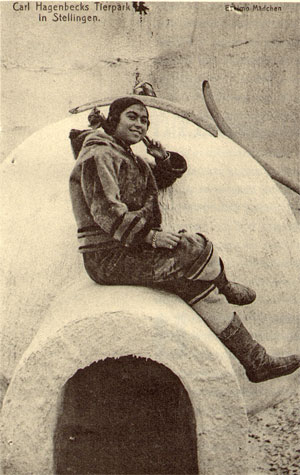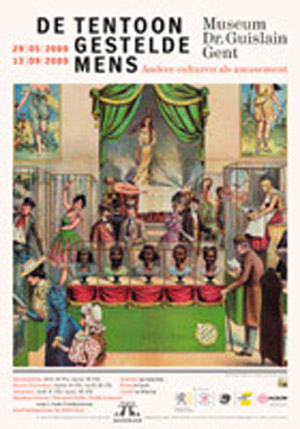The successful German organizer of human exhibitions, Carl Hagenbeck, got Inuit from the Canadian Labrador for a tour to Europe, in 1880. They had not been vaccinated against the variola or smallpox virus and they all died.
The then famous specialist in physical anthropology Rudolph Virchow had been allowed to (try and) measure them during their lifetime; there were two families: a christened and a non-christened family.
The Inuit displayed how they would haunt and fish, and paddled their kayaks in ponds that were constructed for the occasion. They also had to serve scientific goals by having themselves measured and examined. The christened family were tame as lambs, but the woman of the non-christened family did not allow any examination. “She jumped from one corner of the room to another, screamed with a squealing voice, her ugly face was dark red, her eyes were glowing and there was a bit of foam at her mouth; in short, it was an extraordinarily disgusting sight.” This was stated by dr. Virchow in the Zeitschrift für Ethnologie. (Linda Roodenburg in De exotische mens p. 84 – my translation).
This kind of subjective and patronizing descriptions is not at all exceptional in the scientific literature of the era about the ‘other’. It was considered normal not to view upon the objects of the study as equals, but as less than ourselves. At times even the humanity of the others, or their degree of humanity, was questioned.

